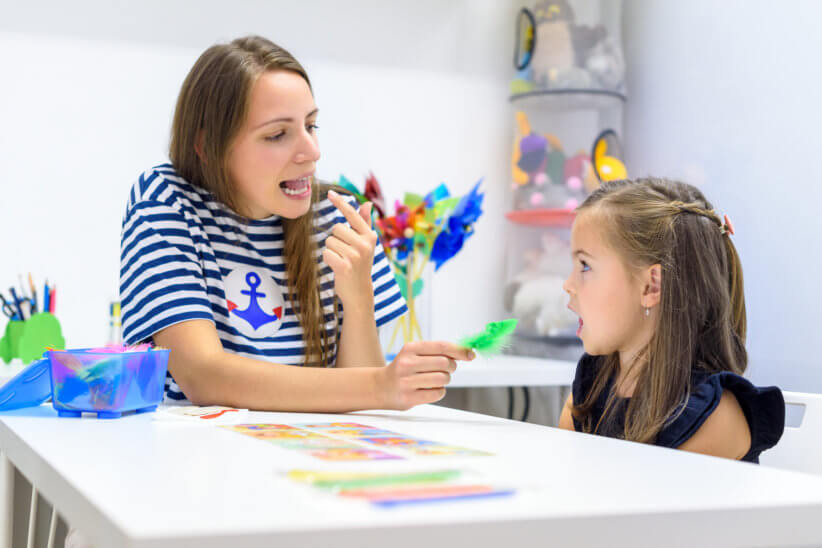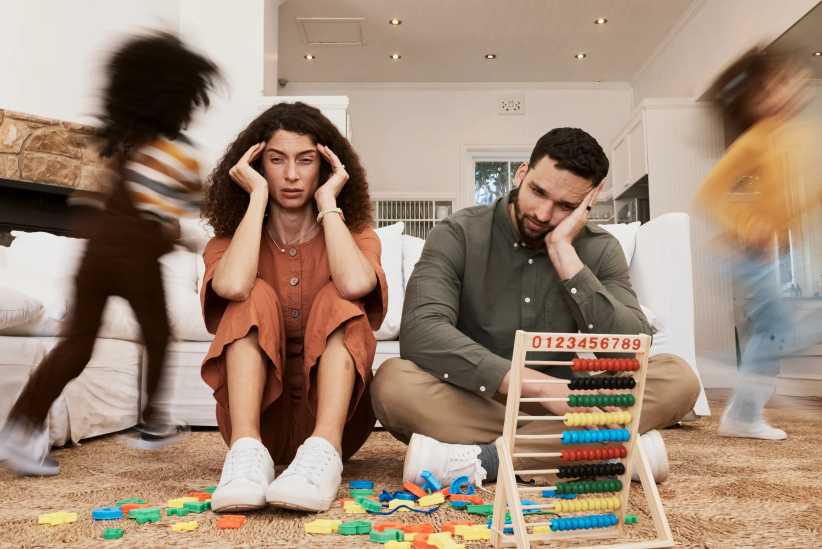
How to Support Your Child Who Stutters
Kids trip up on their words a lot, especially when they’re still learning how to talk. As parents, we worry about everything, so we’re bound to wonder if maybe there’s something else going on. Stuttering is actually not too uncommon as you may think– 5% of young kids stutter and about 1% of all people do, which is 70 million people.
If you’re navigating a potential or diagnosed stutter in your child, we’re here to help. You probably have a million questions, so we caught up with Travis Robertson, VP of Programming at The Stuttering Association for the Young (SAY) to get your questions answered. Read on to learn about how you can best support your child through their speech journey.
What causes stuttering
“Stuttering is a neurological difference in the way that people process speech,” says Robertson. More often than not, a stutter will reveal itself very early as kids are still developing their speech. Robertson explains how a common misconception is that stuttering is caused by trauma or nerves: “Those are things that can exacerbate a stutter perhaps or can bring to light a stutter, but the neurological challenge exists independently of that.”
The only caveat being brain damage due to a physical head injury. Stuttering is also not related to your capabilities as a parent. As parents, we know how easy it is to blame ourselves and to wonder what we could have done differently. In the case of stuttering, it is not caused by anything you did as a parent. Your job moving forward? To support your child as they navigate this challenge.
How parents can recognize stuttering
So if stutters develop at a young age, how can parents recognize the difference between stuttering and typical kid-like mispronunciations? Robertson recommends seeking a diagnosis even if there’s a small concern, because stuttering can look very different from person to person. The SAY Stuttering 101 Guide outlines three generalized “types” of stutters:
- Sound repetitions: repeating one sound or syllable over and over again
- Sound prolongations: extending one sound for a long time
- Silent blocks: pauses between words, a complete stop in sound
If you recognize one or more of these in your child, or some variation of them, then you’ll likely want to see a specialist.
It’s important to note that a stutter does not indicate a learning disability. “People who stutter know what they want to say and are, more often than not, confident in what they want to say. It’s not necessarily a situation of forgetting your words. It’s just the process of creating the sound of the word that is in your mind,” explains Robertson.
How to get involved with your child’s speech pathology
Especially if you have young kids, you’ll want to be involved with your child’s speech therapy sessions to some degree. What might this look like? Goal setting. “Families have options. Work with a speech pathologist to collaborate on what those goals are,” advises Robertson. “What do you want for your speech? Do you want to stop stuttering? Or be able to stutter confidently and help people understand exactly what is going on? Is it that you want to make a new friend? Is it that you want to answer questions in class without the fear of stuttering?”
The goal for a person who stutters does not have to be to stop stuttering altogether. And for little ones around other kids in school or after-school programs, they may have other priorities that feel more urgent to them, such as raising their hand in class without feeling nervous about their stutter. Encourage your child to think about these smaller successes, and work alongside your speech pathologist to set realistic, thoughtful goals.
How stuttering may impact your child emotionally
It’s key that as a parent, you’re aware of what your child who stutters may be experiencing emotionally. “Below the surface there can be feelings of fear, anxiety, trauma, insecurity,” says Robertson, “There are a lot of things that I may be processing in my head: What are the words that I think I’m going to stutter on? Is there an alternative word I can use? Can you tell that I stutter? How is this going to affect the next interaction I have with you?” This is just an idea of what your child may be experiencing. Just as stuttering presents itself differently for everyone, it’s emotional impact will also be different.
It’s important to note that a slight or mild stutter doesn’t necessarily mean that your child is not experiencing insecurity or doubt. Vice versa, Robertson explains: “If I’m a person who has a very strong stutter, that does not necessarily mean that I’m emotionally in a bad place. I may be very confident, secure, and comfortable in the experience that I’m having.” As parents, we have to try our best not to assume. Read on to learn how to talk to your kiddos about what they may be thinking and feeling.
How to best support your child after a stuttering diagnosis
“One of the most important things is just to be able to talk about it,” insists Robertson. The only way to find out what your child is experiencing on the inside is to talk and listen. “Often times, there can be a hesitation to mention the thing or talk about things that are hard, sometimes in hopes that they will go away, or as not to draw more attention to them. It’s important to be able to make space to have the conversation and to make it a collaboration with your child,” says Robertson.
Talking about the stutter may be difficult at first for both you and your child, but it creates a strong emotional support system moving forward. If your child does not seem to want to talk about it at first, don’t be discouraged. Their speech progression journey will take time, and at some point during that time, your child will lean on you because they’ll know you’re there to support them. Ask your child how they felt after their speech pathology sessions, discuss any nerves they may have before heading to school for the day, and check-in with them to see how they feel about their speech progression.
Now, of course their stutter shouldn’t be the only thing you talk about, because you don’t want your child to feel as if they are defined by it. But just let them know that you are open to conversation whenever they are, and that there is nothing wrong with them. “I think it’s important for young people and families to understand that stuttering is okay. It’s okay to be a confident and clear communicator, and still be a person who stutters,” says Robertson.
Tips for listening to your child
Listening sounds like an easy concept, but it can be a lot harder than you think to be a good listener. “The most impactful thing that parents, families, teachers, and everyone in the community can do is to listen,” says Robertson.
There are a few things that you’ll want to refrain from doing when it comes to listening to your child who stutters. First, try not to finish their sentences. “It comes with the best intentions,” explains Robertson, “But that’s a form of not really making time and space for someone. If someone is trying to guess the word that I’m trying to say before I have the chance to communicate it, on some level it can read as a microaggression: I don’t have time to give you space to say what you have to say. It goes a really long way if you as a listener are able to just listen.”
Next, try not to use phrases such as “slow down” or “take a breath”. “Again, it comes with good intentions, but it’s much more of a complex experience than just taking a breath and slowing down. It goes much deeper than that,” says Robertson. It can be difficult, but do your best not to simplify stuttering with these phrases.
At the end of the day, being a good listener means being able to show that you are fully present. Make eye contact, use body language to show that you’re engaged, and be patient to allow your child to say what they want to say. Other children may not always give them the same time and space at school, so you’ll want to make sure that they have it at home. Let your child know that their words matter, and they are worth waiting for!






















